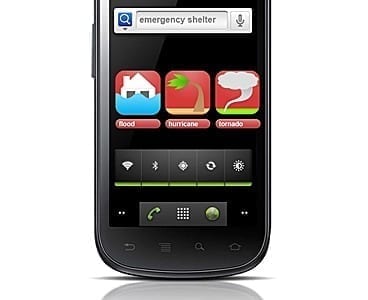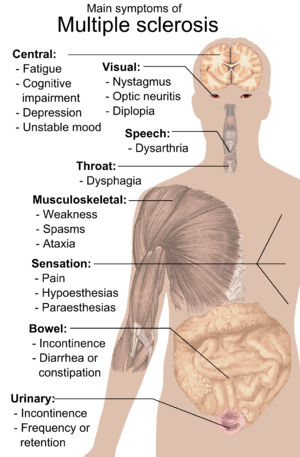
Researchers combine powerful new Web standards with the intuitive, graphical MIT App Inventor to aid relief workers with little programming expertise.
Researchers at MIT’s Computer Science and Artificial Intelligence Laboratory and the Qatar Computing Research Institute have developed new tools that allow people with minimal programming skill to rapidly build cellphone applications that can help with disaster relief.
The tools are an extension of the App Inventor, open-source software that enables nonprogrammers to create applications for devices running Google’s Android operating system by snapping together color-coded graphical components. Based on decades of MIT research, the App Inventor was initially a Google product, but it was later rereleased as open-source software managed by MIT.
With the new tools, an emergency aid worker — or anyone else, for that matter — could, for instance, build an application to monitor many different data sources on the Internet for updated information about the locations of ad hoc shelters, and display them all on a Google map. The app could also allow individual users to revise, annotate or supplement the information displayed in the map.
The researchers presented their new tools in a paper at the Workshop on Semantic Cities last month in Beijing. The MIT researchers on the paper — principal research scientist Lalana Kagal, graduate students Oshani Seneviratne, Daniela Miao and Fu-ming Shih, and postdoc Ilaria Liccardi — are all members of CSAIL’s Decentralized Information Group (DIG).
DIG shares office space in MIT’s Stata Center with the World Wide Web Consortium (W3C), the organization that establishes Web standards like the hypertext markup language (html) and the extensible markup language (xml). Tim Berners-Lee, the Web’s inventor, heads the W3C, but in his capacity as 3COM Founders Professor of Engineering at MIT, he also directs DIG.
DIG’s focus is research that takes advantage of the standards developed by the W3C. The new app-development tool requires that the data it accesses be formatted according to the resource description framework, or RDF.
Feedback loop
RDF is the central standard of the so-called Semantic Web, which would, in effect, convert the Web from a giant text file into a giant database. RDF provides a simple way both to label data items at different locations on the Web and to describe the relationships among them. Where a standard Google search could, say, find Web pages on which the phrases “restaurant” and “Penn Station” appear — including e-books in which they’re thousands of words apart, or the website for a restaurant chain that happens to be called “Penn Station” — a Semantic Web search could retrieve only the pertinent sections of only those sites that contain information about restaurants within a mile of the precise geographic coordinates of New York’s Penn Station that are open past 10 p.m. and have vegetarian entrees.
Since the RDF standard was first released in 2004, its adoption has been slow but steady. Companies like IBM and Sears, media outlets like The New York Times and the BBC, and public information sources like airport websites and the PubMed index of medical-journal articles all use RDF. But perhaps more importantly for the new disaster-response tool, so do many government agencies. Data on the U.S. government’s data.gov site — and at the corresponding sites in many other countries — as well as on the websites of agencies like the Securities and Exchange Commission, the Census Bureau, and the National Science Foundation, put data online using RDF.
Kagal, however, hopes that new tools like the disaster-response application she and her colleagues developed will accelerate the adoption of RDF. “We’re hoping that we’ll have a kind of cyclic effect,” she says. “As people use these apps more, they will automatically generate structured data. And as there’s more structured data out there, there will be people building more apps to consume them, which will in turn generate more structured data.”
“When you have a disaster, there are two issues,” says Jim Hendler, director of the Institute for Data Exploration and Applications at Rensselaer Polytechnic Institute’s. “One is, ‘How do you get the data you need and pull it together?’ And two is, ‘How do you put that in the hands of the person who needs it?’ And this project is one of the first to really approach both parts of the problem together.”
The Latest Bing News on:
Disaster-relief phone apps
- Disaster relief application deadline looms due to January severe weatheron May 6, 2024 at 4:50 pm
The deadline for eligible local governments and non-profits to apply for FEMA funds following the severe winter storms, straight-line winds, landslides and mudslides that occurred in January is almost ...
- Salvation Army of Omaha partners with local businesses to open more disaster relief centerson April 28, 2024 at 1:09 pm
ONCE MULTIPLE TORNADOES RIPPED THROUGH NEBRASKA AND IOWA, THE ORGANIZATION OPENED DISASTER RELIEF CENTERS. AND AS KETV NEWSWATCH SEVEN’S DAVON TAYLOR REPORTS, ANOTHER ONE IS SET TO OPEN IN WEST ...
- Portage County Disaster Relief Fund launched to help victims of Windham tornado: Here's how you can contributeon April 19, 2024 at 3:13 pm
In the aftermath of Wednesday's EF-1 tornado in Windham, officials in Portage County have announced a fund accepting monetary donations to help impacted victims. On Friday, Portage County ...
- Documenting disaster is an important action itemon April 18, 2024 at 5:00 pm
Quick actions can ensure you get the insurance payout, emergency relief funding and other assistance in a timely manner to help your business recover and rebuild. Keep these post-disaster tips in ...
- Family Emergency Preparedness Planon March 13, 2024 at 1:00 am
We’ve prepared these simple tips to answer the pressing question: How do you create an emergency preparedness plan for your family? With the generous support of people like you, our emergency teams ...
- The International Law of Disaster Reliefon November 30, 2023 at 8:54 pm
This edited volume brings together experts, emerging scholars, and practitioners in the field of international disaster law from North America, Japan, New Zealand, and Australia to analyze the ...
- disaster reliefon November 9, 2023 at 4:01 pm
© 2024 Fortune Media IP Limited. All Rights Reserved. Use of this site constitutes acceptance of our Terms of Use and Privacy Policy | CA Notice at Collection and ...
- Joining up to support disaster reliefon August 25, 2023 at 5:00 pm
For homeowners, disaster loans up to $500,000 are available for repair or replacement of destroyed real estate. Homeowners and renters are eligible for up to $100,000 to repair or replace personal ...
- Jewish Federation Disaster Reliefon February 6, 2023 at 12:39 pm
Moving forward, donations to the Jewish Federation Disaster Relief Fund will also support hurricane relief efforts in Puerto Rico and the wider Caribbean, and earthquake relief efforts in Mexico. We ...
- A Guide To Tax Planning For Victims Of Hurricane Ian And Other Disasterson October 1, 2022 at 10:55 am
A qualified disaster relief payment is any amount paid to or for the benefit of a person to reimburse or pay reasonable and necessary personal, family, living or funeral expenses that are a result ...
The Latest Google Headlines on:
Disaster-relief phone apps
[google_news title=”” keyword=”Disaster-relief phone apps” num_posts=”10″ blurb_length=”0″ show_thumb=”left”]
The Latest Bing News on:
Contract for the Web
- DCMA Unveils Contract Administration Management System for Report Deliveryon May 9, 2024 at 4:02 pm
The Contractor Effectiveness Capability and Chief Digital and Artificial Intelligence Office made up the CAMS team that developed the new tool for on-time delivery report in collaboration with ...
- AGS Enters Into Definitive Agreement To Be Acquired By Brightstar Capital Partners for Approximately $1.1 Billionon May 9, 2024 at 7:29 am
PlayAGS, Incorporated (NYSE: AGS) (“AGS” or the “Company”), a global gaming supplier of high-performing slot, table, and interactive products, today announced that it has signed a definitive agreement ...
- Judge tosses X’s contract claims against data scraping companyon May 8, 2024 at 5:00 pm
Workers install lighting on an "X" sign atop the company headquarters, formerly known as Twitter, in downtown San Francisco, Friday, July 28, 2023. (AP Photo/Noah Berger, File) SAN FRANCISCO (CN) — ...
- BC Institute for Scientific Research awarded $5.3M contracton May 3, 2024 at 5:01 pm
The United States Air Force has awarded a $5.3 million contract to Boston College’s Institute for Scientific Research to study the chemistry and physics of the space environment, according to ISR ...
- Hennepin Co. contract with D.C. lawyers for Londregan prosecution could cost up to $1Mon May 3, 2024 at 2:42 pm
The Hennepin County Attorney's office has entered into a contract with a Washington D.C.-based law firm amid an internal shakeup to prosecute Ryan Londregan, who shot and killed Ricky Cobb II on an ...
- Intrepid Secures $446M Army Contract for Enterprise Business System Supporton May 1, 2024 at 2:46 am
Intrepid has received a potential five-year, $445.8 million contract from the U.S. Army to provide support services for the General Fund Enterprise Business System.
- Nexon Signs Global Publishing Agreement for Project Ton April 30, 2024 at 3:46 pm
NEXON announced that its subsidiary, Nexon Korea Corporation, signed a global publishing agreement with GRAYGAMES Inc. to launch a new MMORPG, Project T for PC and mobile. Developed by GRAYGAMES, ...
- Nexon Signs Global Publishing Agreement For Project T, The MMORPG Based On Korean Web Novel Overgearedon April 30, 2024 at 11:52 am
Nexon announced a global publishing deal with developer Graygames for Project T, a new MMORPG based on the Korean web novel and webtoon Overgeared. For those unfamiliar, Overgeared focuses on the ...
- 'Will they be able to take our home?': This Houston couple got tricked into a contract — to pay up to $67K — for 'free' solar panels. Here are 3 legit ways to get cash back ...on April 28, 2024 at 3:43 am
Bernard and Tasa Mosley, a retired couple from Houston, Texas, learned that lesson the hard way when they fell for a scam offering free solar panels. The budget-conscious pair told KPRC 2 ...
- AI Safety for Smart Contracts Is AI Safety for the Worldon April 23, 2024 at 10:04 am
Web3 and blockchain technology go far beyond Bitcoin and NFTs. As businesses become more aware of Web3’s possibilities, one feature will play an important role: smart contracts. Smart contracts ...
The Latest Google Headlines on:
Contract for the Web
[google_news title=”” keyword=”Contract for the Web” num_posts=”10″ blurb_length=”0″ show_thumb=”left”]










